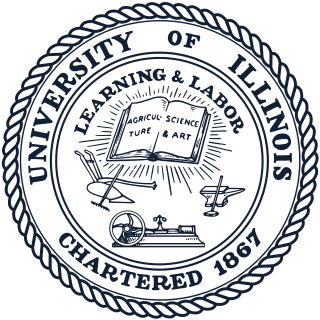
The University of Illinois System is a system of public universities in the U.S. state of Illinois consisting of three universities: Chicago, Springfield, and Urbana-Champaign. Across its three universities, the University of Illinois System enrolls more than 94,000 students. It had an operating budget of $7.18 billion in 2021.
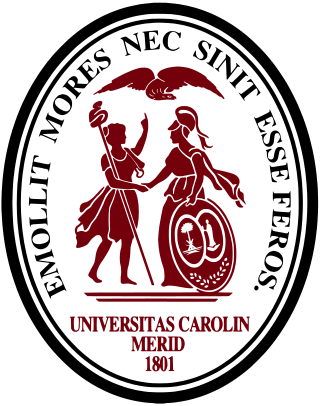
The University of South Carolina Aiken is a public university in Aiken, South Carolina. It is part of the University of South Carolina System and offers undergraduate degree programs as well as master's degrees. Additional graduate courses and degree programs are offered through the University of South Carolina Extended Graduate Campus program. The University of South Carolina Aiken awards baccalaureate degrees in more than 30 major areas of study including the bachelor of science in business administration online through Palmetto College.

The University of Massachusetts is the five-campus public university system and the only public research system in the Commonwealth of Massachusetts. The university system includes five campuses, a satellite campus in Springfield and also 25 campuses throughout California and Washington with the University of Massachusetts Global.
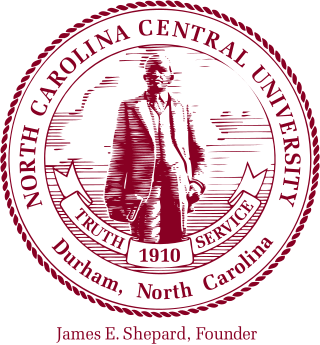
North Carolina Central University is a public historically black university in Durham, North Carolina. Founded by James E. Shepard in affiliation with the Chautauqua movement in 1909, it was supported by private funds from both Northern and Southern philanthropists. It was made part of the state system in 1923, when it first received state funding and was renamed as Durham State Normal School. It added graduate classes in arts and sciences and professional schools in law and library science in the late 1930s and 1940s.

The University of South Carolina Beaufort is a public college with three campuses in the Lowcountry region of South Carolina. It is part of the University of South Carolina System, enrolls about 2,000 students, and offers over 50 areas of study. The main campus is in Bluffton, South Carolina. The institution's campus in Beaufort houses the school's honor programs and the Department of Visual Arts & Design. The campus location on Hilton Head Island is home to the institution's program for hospitality management.

North Carolina Agricultural and Technical State University is a public, historically black, land-grant research university in Greensboro, North Carolina. It is a constituent institution of the University of North Carolina System. Founded by the North Carolina General Assembly on March 9, 1891, as the Agricultural and Mechanical College for the Colored Race, it was the second college established under the provisions of the Morrill Act of 1890, as well as the first for people of color in the State of North Carolina. Initially, the college offered instruction in agriculture, English, horticulture and mathematics. In 1967, the college was designated a Regional University by the North Carolina General Assembly and renamed North Carolina Agricultural and Technical State University.
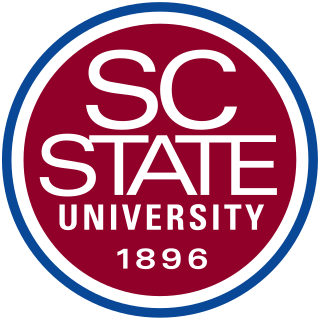
South Carolina State University is a public, historically black, land-grant university in Orangeburg, South Carolina. It is the only public, historically black land-grant institution in South Carolina, is a member-school of the Thurgood Marshall College Fund, and is accredited by the Southern Association of Colleges and Schools (SACS).

The University of South Carolina is a public research university in Columbia, South Carolina. It is the flagship of the University of South Carolina System and the largest university in the state by enrollment. Its main campus is on over 359 acres (145 ha) in downtown Columbia, close to the South Carolina State House. The university is classified among "R1: Doctoral Universities with Highest Research Activity". It houses the largest collection of Robert Burns and Scottish literature materials outside Scotland and the world's largest Ernest Hemingway collection.
The Trustees of Columbia University in the City of New York is the governing board of Columbia University in New York City. Founded in 1754, it is also referred to as the Columbia Corporation, as distinguished from affiliates of the university that are separate legal entities, such as Barnard College. The board of trustees was originally composed of ex officio members including officials from the New York colonial government, crown officials, and various Protestant ministers from the city. Following the college's resuscitation following the American Revolutionary War, it was placed under the control of the Board of Regents of the University of the State of New York, and the university would finally come under the control of a private board of trustees in 1787. The board is notable for having administered the Pulitzer Prize from the prize's establishment until 1975. It consists of 24 members and as of 2021 is co-chaired by Lisa Carnoy and Jonathan Lavine.
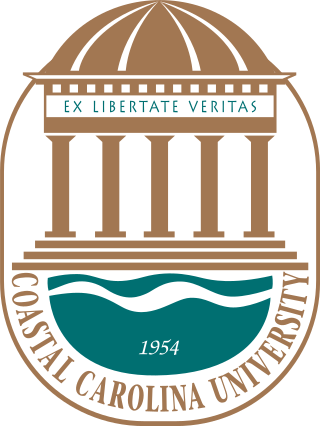
Coastal Carolina University is a public university in Conway, South Carolina. Founded in 1954 as Coastal Carolina Junior College, and later joining the University of South Carolina System as USC Coastal Carolina, it became an independent university in 1993.
In the United States, a board often governs institutions of higher education, including private universities, state universities, and community colleges. In each US state, such boards may govern either the state university system, individual colleges and universities, or both. In general, they operate as a board of directors, and they vary by formal name, size, powers, and membership. In some states, members are appointed by the governor.

The University of South Carolina Sumter is a public college in Sumter, South Carolina. It is part of the University of South Carolina System and one of the four regional USC campuses which make up Palmetto College. It only awards associate degrees and has approximately 1,500 students. It is accredited by the Commission on Colleges of the Southern Association of Colleges and Schools. USC Sumter has 2 available nursing programs through fellow USC schools
The Clemson–South Carolina rivalry is an American collegiate athletic rivalry between the Clemson University Tigers and the University of South Carolina Gamecocks, the two largest universities in the state of South Carolina. Since 2015, the two compete in the Palmetto Series, which consists of more than a dozen athletic, head-to-head matchups each school year. The all-sport series has been won by South Carolina each year. Both institutions are public universities supported by the state, and their campuses are separated by only 132 miles. South Carolina and Clemson have been bitter rivals since 1896, and a heated rivalry continues to this day for a variety of reasons, including the historic tensions regarding their respective charters and the passions surrounding their athletic programs. It has often been listed as one of the best rivalries in college sports.
The Trustees of Princeton University is a 40-member board responsible for managing Princeton University's $37.6 Billion endowment (2021), real estate, instructional programs, and admission. The Trustees include at least 13 members elected by alumni classes, and the Governor of New Jersey and the President of the university as ex officio members.

This history of the University of South Carolina began in the 18th century when intersectional differences arose between the Lowcountry and the Upstate. It was conceived that a state supported college located in the center of the state at Columbia, South Carolina, would foster friendships between those of both regions thus allowing the state to present a united front to the nation when threatened with issues jeopardizing the South Carolina way of life. The University of South Carolina's history can be described in four distinct phases: a firebrand college (1801–1862), constant reorganization (1865–1891), college to university (1891–1944) and the state's university (1944–present).
The University of South Carolina Salkehatchie is a public college with campuses in Allendale and Walterboro, South Carolina. It is one of four regional University of South Carolina System campuses which make up Palmetto College. USC Salkehatchie is accredited by the Southern Association of Colleges and Schools as part of the flagship campus. More than 1100 students attend at one of its two sites.
The University of South Carolina Lancaster is a public college in Lancaster, South Carolina. It is one of the four regional Palmetto Colleges in the University of South Carolina System. It is accredited by the Southern Association of Colleges and Schools Commission on Colleges and offers associate degrees and bachelor's degrees. As of 2017, more than 1,900 students attended the college at its campus in the Piedmont region of South Carolina.

Robert Louis Caslen Jr. is a retired United States Army officer who served as the 59th superintendent of West Point from 2013 until 2018 and as the 29th president of the University of South Carolina from July 2019 until May 2021. Between January and May 2019, Caslen was senior counsel to the president and interim chief financial officer at the University of Central Florida. On July 19, 2019, the Board of Trustees of the University of South Carolina elected him as the school's 29th president, a position he assumed on August 1, 2019. Caslen also served as HigherEchelon's Special Advisor on Executive Leadership and Character Development. He resigned as President at South Carolina on May 12, 2021.
Lamar University is a state university in Beaumont, Texas. Lamar is a Carnegie Doctoral Research University, one of only 27 so designated universities in the United States.

Harris Pastides is an academic and university administrator who served as the 28th president of the University of South Carolina from 2008 until 2019. In addition to his employment at the university Pastides has been on the board of directors of Synovus, a financial services company. On October 3, 2018, Pastides announced his intention to retire from the presidency of USC, the last day of which he served on July 31, 2019. He was again appointed Interim President at South Carolina after Bob Caslen resigned on May 13, 2021, officially taking office May 21, 2021 and serving until July 1, 2022.











